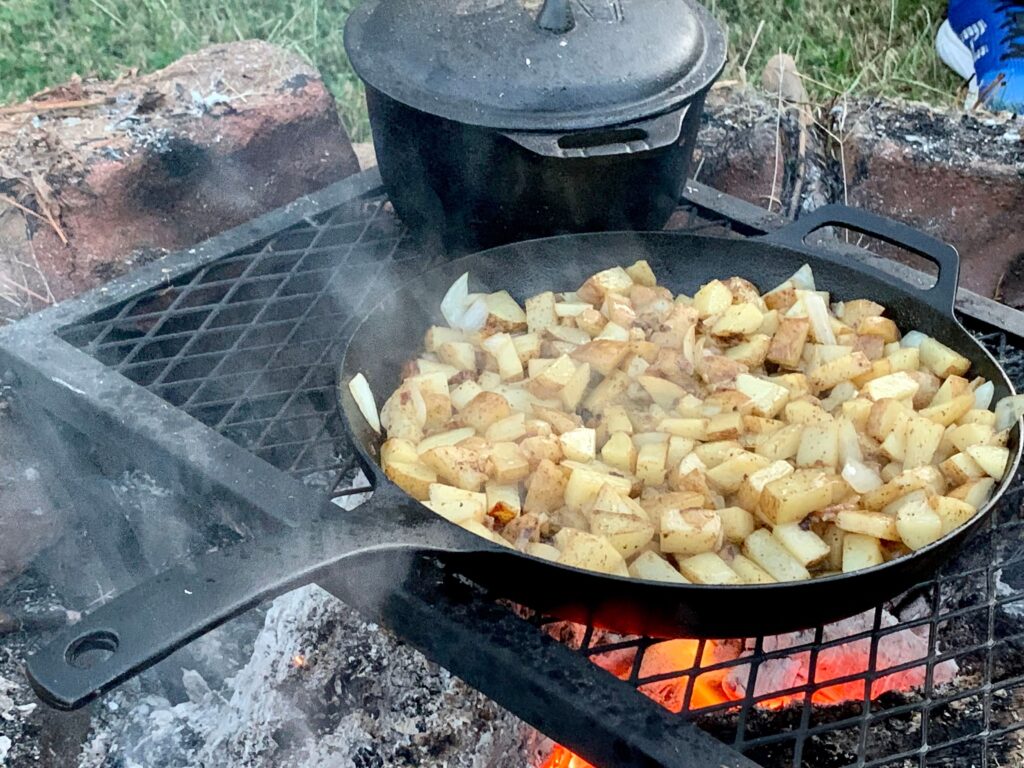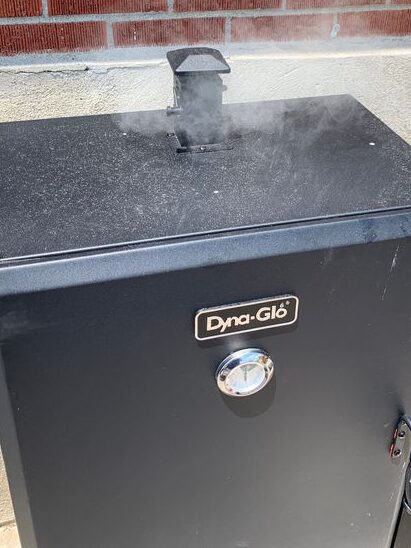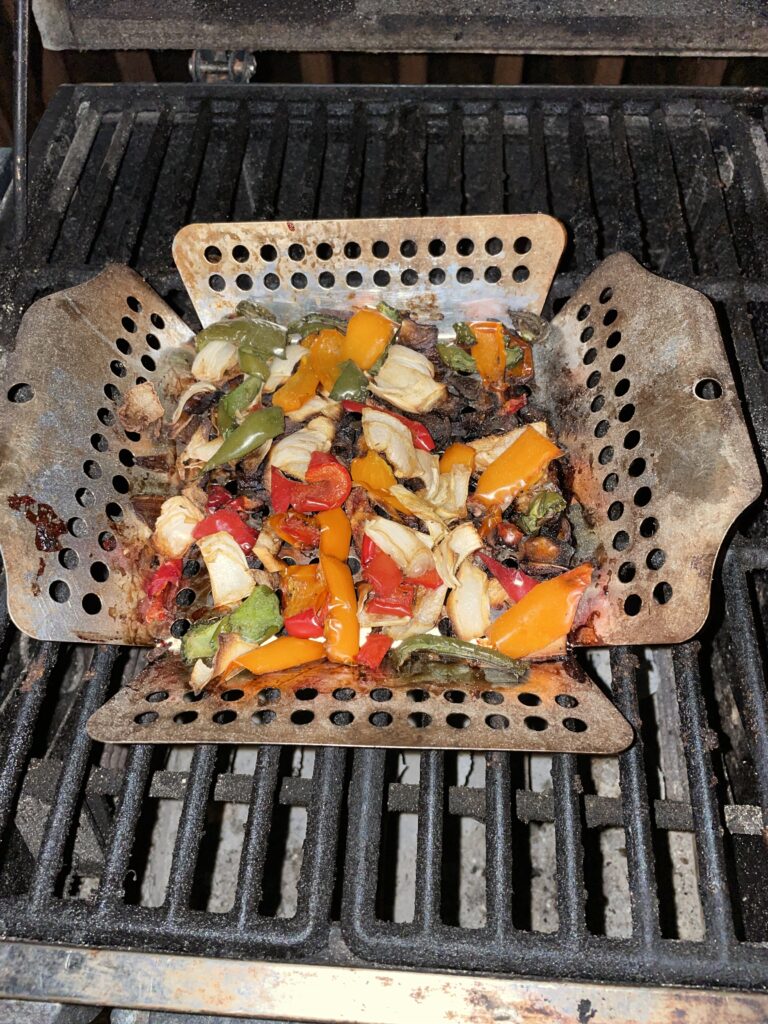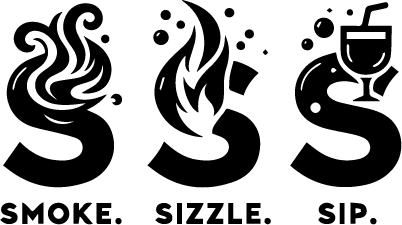Introduction
Outdoor cooking is more than just a way to prepare food; it’s an experience, a passion, and for many, a serious hobby. Whether it’s a sunny weekend or a cool evening, millions gather around their grills and smokers to cook delicious meals that are enjoyed in the great outdoors. The sizzle of a steak on the grill or the slow aroma of smoke from a smoker defines much of summer cooking and beyond.
Grilling and smoking are two of the most popular methods of outdoor cooking, each with its unique techniques, flavors, and traditions. While grilling often steals the spotlight for quick and high-heat cooking, smoking is celebrated for its slow-cooked tenderness and depth of flavor. Understanding the differences between grilling and smoking can significantly enhance your cooking repertoire and maybe even your enjoyment of food preparation.
This guide will delve deep into what sets grilling apart from smoking, exploring the nuances of each method, the best practices for both, and some tips on choosing the right style for your meal. Whether you’re a novice looking to start your first barbecue or a seasoned pitmaster, this comparison will provide you with the insights needed to master these art forms.
What is Grilling?
Grilling is a cooking method that involves direct heat. Usually, food is cooked on a grill rack above a heat source, which can be charcoal, gas, or even electricity. The heat is intense and the cooking is fast, making grilling ideal for tender cuts of meat, vegetables, and even fruits.

Key Characteristics of Grilling:
- High Heat: Grilling typically involves temperatures that can exceed 500°F (260°C). This high heat creates a Maillard reaction, a chemical reaction between amino acids and sugars that gives grilled food its distinctive charred flavor and appealing crust.
- Speed: Due to the high heat, grilling cooks food quickly, often within minutes, preserving the freshness and textures that might be lost in longer cooking processes.
- Flavor: Grilling imparts a smoky flavor especially when using charcoal or wood grills. This is due to the drippings from the food hitting the heat source and creating flavorful smoke that is absorbed back into the food.
Health Benefits: Grilling is considered one of the healthier cooking methods because it requires less oil and melts away excess fats from food. Additionally, grilling vegetables is beneficial as it retains more vitamins and minerals than boiling. However, it’s important to manage charred portions of meat and high heat to reduce the risk of carcinogens.
What is Smoking?
Smoking uses smoke to cook and flavor food, typically meat or fish, over a longer period and at lower temperatures compared to grilling. This process not only cooks food but also tenderizes it, making it ideal for tougher cuts of meat. The smoke is generated from burning or smoldering materials, usually wood, which imparts different flavors depending on the type of wood used.

Key Characteristics of Smoking:
- Low Heat: Smoking involves temperatures ranging from 225°F to 275°F (107°C to 135°C). This low heat combined with the prolonged cooking time allows the food to become tender while absorbing the flavors of the smoke.
- Time-Consuming: Smoking can take anywhere from a few hours to an entire day, depending on the size and type of meat. This slow process is crucial for the breakdown of tougher fibers in meat, resulting in a tender texture.
- Flavor Depth: The slow absorption of smoke infuses the food with a rich, deep flavor that cannot be replicated in faster cooking methods. The choice of wood, like hickory, mesquite, apple, or cherry, can greatly influence the flavor profile of the smoked product.
Flavor Benefits: The distinct smoky flavor is the most significant benefit of smoking food. It’s particularly popular in the preparation of ribs, brisket, and smoked sausages, where the depth of flavor achieved is unmatched by other cooking methods. Additionally, the smoking process can help preserve food, which is a benefit derived from its origins as a preservation technique.
Key Differences Between Grilling and Smoking
Understanding the nuances between grilling and smoking is essential for any outdoor cooking enthusiast. Each method not only uses different equipment but also different techniques, timescales, and results in distinct flavors and textures in the cooked food.
Cooking Time and Temperature
- Grilling: Typically involves quick cooking over high heat. Temperatures can soar above 500°F (260°C), allowing food to cook within minutes. This is perfect for searing meats and achieving a crispy exterior while keeping the interior moist.
- Smoking: Contrasts sharply with grilling, as it requires low temperatures—usually between 225°F and 275°F (107°C and 135°C)—and significantly longer cooking times. Smoking can last from a couple of hours to an entire day, depending on the type of food and the desired tenderness.
Flavor Profiles
- Grilled Foods: The high heat of grilling helps to lock in juices and create a crispy, caramelized exterior that is highly appealing. The direct exposure to fire also imparts a smoky taste, but it is much less intense compared to smoking.
- Smoked Foods: The hallmark of smoked food is its deep, rich smoky flavor. The slow cooking process allows the smoke to penetrate deeply into the food, infusing it with the unique flavors of the wood used in the smoker.
Equipment and Setup
- Grilling Setup: Grills are generally more straightforward to set up and can be ready to cook in just a few minutes, especially gas grills. They require less space and can be used for quick meals.
- Smoking Setup: Smokers tend to be more complex and require more preparation time. Managing the smoke, consistent temperature, and the overall cooking process demands more attention and expertise.
Health Aspects
- Grilling: While grilling is considered healthier due to reduced fat content, there is a risk of creating carcinogenic compounds if food is charred or overcooked.
- Smoking: The low-temperature process of smoking is less likely to produce harmful compounds, but the high use of salt and curing preparations can be a consideration for health-conscious individuals.
Each method offers distinct advantages and can be chosen based on the desired outcome, flavor, and available cooking time. Grilling is ideal for a quick, flavorful meal with a smoky essence, while smoking is suited for a leisurely cooking experience that rewards the chef with intricately flavored dishes.

Choosing the Right Method for Your Meal
When planning an outdoor cooking session, the decision between grilling and smoking often comes down to a few key factors: the type of food, the available time, and the desired flavor. Here’s how to determine which method will best suit your culinary goals.
Based on the Type of Food
- Grilling: Best for tender cuts of meat like steaks, chops, fish, and vegetables. These items cook quickly and benefit from the direct heat which seals in flavors and juices, creating appealing grill marks and a smoky taste.
- Smoking: Ideal for tougher cuts of meat such as brisket, ribs, or pork shoulders. These benefit from the long, slow cook times that break down connective tissues and infuse deep smoky flavors. Smoking is also great for flavoring cheese and nuts.
Considerations for Time
- Quick Meals: If you’re pressed for time or prefer a faster cooking process, grilling is the way to go. It’s possible to fire up the grill and cook a delicious meal in less than an hour.
- Leisurely Cooking: If you have the time to spare and enjoy the process of cooking as much as the eating, smoking offers a rewarding experience. Smoking requires preparation and patience but results in flavors that are worth the wait.
Desired Flavor
- Intense and Quick Smoky Flavor: Grilling can impart a smoky flavor quickly due to high heat and direct exposure to smoke, suitable for when you want a hint of smoke but not an overwhelming taste.
- Rich, Penetrating Smoky Flavor: If you prefer a strong, deep smoky flavor that permeates the food, smoking is the appropriate choice. The extended exposure to smoke during the slow cooking process enriches the overall taste.
Special Occasions
- Grilling: Perfect for casual gatherings and impromptu dinners where the grill becomes a center of social interaction. It allows the cook to engage with guests while managing the food.
- Smoking: Best for planned events or special occasions where the meal is the highlight. Smoking can become a day-long activity that builds anticipation among guests and delivers exceptionally flavored dishes that are sure to impress.
Understanding these distinctions will help you choose the right cooking method for any given situation, ensuring that every meal is not only delicious but also a joy to prepare.
Techniques and Tips for Grilling
Grilling is both an art and a science, requiring the right balance of heat, timing, and technique to achieve perfect results. Here are some essential tips and techniques to help you master the grill:
Setting Up Your Grill
- Preheat the Grill: Always start with a hot grill. For charcoal grills, let the coals turn ashy before you begin. For gas grills, preheat to the desired temperature before adding food.
- Clean Grilling Surface: A clean grill prevents food from sticking and ensures better flavor. Use a grill brush to clean off any residue before and after grilling.
Grilling Techniques
- Direct vs. Indirect Heat: Use direct heat for quick-cooking items like burgers and steaks, and indirect heat for slower-cooking items like whole chickens or large roasts. This helps in managing the crust and doneness of the food.
- Monitoring Temperature: Keep an eye on the grill temperature and adjust your heat source as necessary. Consistent temperature is key to evenly cooked food.
Tips for Perfect Grilling
- Don’t Overcrowd the Grill: Give each piece of food enough space to cook evenly and allow for easy flipping.
- Use a Meat Thermometer: To ensure meats are cooked to safe and desired doneness, always use a meat thermometer.
Recommended Tools and Accessories
- Grill Tongs and Spatula: Invest in long-handled tongs and a sturdy spatula to easily maneuver food on the grill.
- Chimney Starter (for Charcoal Grills): A chimney starter is essential for quick, even heating of charcoal without lighter fluid.
- Grill Basket: Useful for grilling small items like vegetables or seafood that might fall through the grate.
By following these techniques and utilizing the recommended tools, you can enhance your grilling skills and enjoy perfectly grilled dishes every time.

Techniques and Tips for Smoking
Smoking requires patience and a bit of know-how to maintain the right conditions over the extended cooking periods. Here are some strategies to help you get the most out of your smoking sessions:
Setting Up Your Smoker
- Maintain Consistent Temperature: Use a digital thermometer to keep your smoker at a consistent temperature throughout the cooking process.
- Choose the Right Wood: Different woods impart different flavors. Hickory and mesquite are strong and bold, while apple and cherry are sweeter and milder.
Smoking Techniques
- Maintain Good Airflow: Ensure that your smoker has good airflow to keep the smoke circulating and the temperature stable.
Tips for Perfect Smoking
- Monitor the Smoke: Look for a thin, steady stream of smoke. Too much smoke can lead to a bitter taste.
- Keep the Lid Closed: Resist the urge to open the smoker frequently. Every time you open the lid, heat and smoke escape, which can affect cooking time and flavor.
- Be Patient: The key to successful smoking is low and slow cooking. Rushing the process can lead to undercooked or unevenly flavored food.
Recommended Smoking Accessories
- Digital Thermometer: Essential for monitoring the smoker’s internal temperature without opening it.
- Smoking Box (for Gas Grills): Allows you to turn a regular gas grill into a smoker by containing wood chips and producing smoke.
These smoking tips and techniques are designed to help both novices and experienced smokers achieve consistent results and delicious, smoky flavors.
FAQs About Grilling and Smoking
When it comes to grilling and smoking, both beginners and seasoned cooks often have questions about techniques, equipment, and troubleshooting. Below are some frequently asked questions that can help clarify common concerns and enhance your cooking experience. Many of these will be covered in much more detail in future posts that will be linked as they are created.
1. What is the main difference between grilling and smoking?
- Answer: The main difference lies in the cooking time and temperature. Grilling is done over high heat for short periods, making it suitable for tender cuts and quick meals. Smoking uses low heat and longer cooking times, ideal for tough cuts of meat that benefit from slow cooking to become tender and flavorful.
2. Can I use my grill to smoke food?
- Answer: Yes, many grills can be adapted for smoking. For gas grills, you can use a smoker box filled with wood chips. For charcoal grills, you can create a two-zone fire and add wood chips directly to the coals to generate smoke.
3. What are the best woods to use for smoking?
- Answer: The choice of wood can greatly affect the flavor of your smoked food. Hardwoods like hickory and mesquite impart a strong flavor, suitable for beef and pork. Fruit woods like apple and cherry offer a milder, sweeter taste, perfect for chicken and fish.
4. How can I tell when smoked meat is done?
- Answer: The best way to determine doneness is by using a meat thermometer. Different meats have different safe internal temperatures. For example, poultry should reach 165°F, while beef brisket is often smoked to an internal temperature of 195°F to 205°F for optimal tenderness.
5. What do I do if my smoker is producing too much smoke?
- Answer: Excessive smoke can lead to a bitter taste. Ensure that you are not adding too much wood and that your air vents are adjusted properly to allow for good airflow. Maintaining a thin, steady stream of smoke is ideal.
These FAQs are designed to address common issues and tips for grilling and smoking, providing readers with practical advice to enhance their cooking techniques. This section aims to empower cooks with the knowledge needed to tackle any outdoor cooking challenge confidently.
Conclusion
Mastering the art of outdoor cooking through grilling and smoking can transform simple ingredients into exquisite meals that capture the essence of flavor and tradition. Each method offers unique benefits and is suited to different types of food and occasions. Whether you choose the quick and fiery grilling approach or the slow and savory smoking method, both can yield delicious results that are sure to impress your guests and satisfy your culinary cravings.
Grilling is perfect for those who seek immediate gratification and enjoy interacting with the food as it cooks. It’s ideal for social gatherings where time is of the essence, and the chef doesn’t want to stray far from the party. On the other hand, smoking is a more meditative cooking method that rewards patience and preparation with deep, complex flavors that are hard to replicate in any other cooking style.
As you continue to explore the diverse techniques and recipes offered by grilling and smoking, remember that the journey is as rewarding as the destination. Each meal is an opportunity to refine your skills, experiment with flavors, and enjoy the process of creation. So fire up your grill or smoker, and let the adventure begin!
Engage with us in the comments below to share your experiences, tips, or questions about grilling and smoking.
